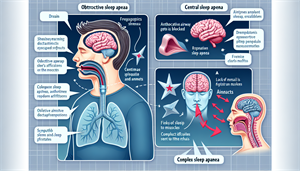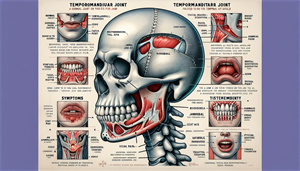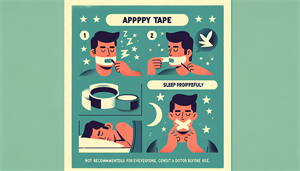
Understanding Sleep Apnea and Its Impact on Sleep
Sleep apnea is like an uninvited guest that disrupts your sleep night after night. But what exactly is sleep apnea? It’s a sleep disorder that can cause neck pain and comes in two main types: obstructive and central sleep apnea. The difference between these two types lies in their cause. Obstructive sleep apnea occurs when the throat muscles relax and block your airway, causing your chest and abdomen to move out of sync. On the other hand, central sleep apnea is a result of the brain failing to send the right signals to your breathing muscles, leading to an interruption in breathing. Sounds scary, right? Hence, getting an accurate diagnosis is vital, and at times, employing two pillows might enhance your sleep posture and overall sleep quality.
Obstructive Sleep Apnea
Imagine this: you’re sleeping soundly, and suddenly, your breathing stops and starts erratically. This is the reality for people with obstructive sleep apnea. When the muscles in your throat relax, they can block your airway, interrupting your breathing while you’re asleep. Causes can range from airway blockage to being overweight or even specific anatomical features of the head and neck. The consequences of sleep deprivation are significant. They include: Feeling tired during the day Increased risk of heart problems Unsafe driving Changes in mental health Other medical conditions Sleep deprivation is more common than you might think, affecting around 15 to 30 percent of males and 10 to 15 percent of females in North America. It is a widespread concern that should not be taken lightly.
Central Sleep Apnea
Central sleep apnea, though less common, is no less serious. It happens when the brain doesn’t send the right signals to the breathing muscles during sleep. Factors that can contribute to its development include: Age Sex Heart conditions Other medical conditions Certain medications Obesity Living in high altitude areas If left untreated, sleep apnea can lead to serious health issues, making sleep apnea worse, including: Fatigue Increased risk of cardiovascular events such as stroke and heart attack Heart failure Arrhythmia Obesity Diabetes High blood pressure Now, you can comprehend the significance of understanding and tackling sleep apnea.
Symptoms and Diagnosis
Now that we’ve discussed the types of sleep apnea, let’s look at the signs and how it’s diagnosed. Common symptoms include: Feeling tired during the day Being excessively sleepy Loud snoring Noticing moments of not breathing during sleep Morning headaches Difficulty concentrating or remembering things Waking up with a dry mouth or sore throat Night sweats Restless sleep or insomnia Mood changes or irritability If you experience any of these symptoms, it’s important to consult a healthcare professional for a proper diagnosis. They may recommend a sleep study to monitor your breathing patterns and other vital signs while you sleep. This will help determine the severity of your sleep apnea and the most effective treatment plan for you.


